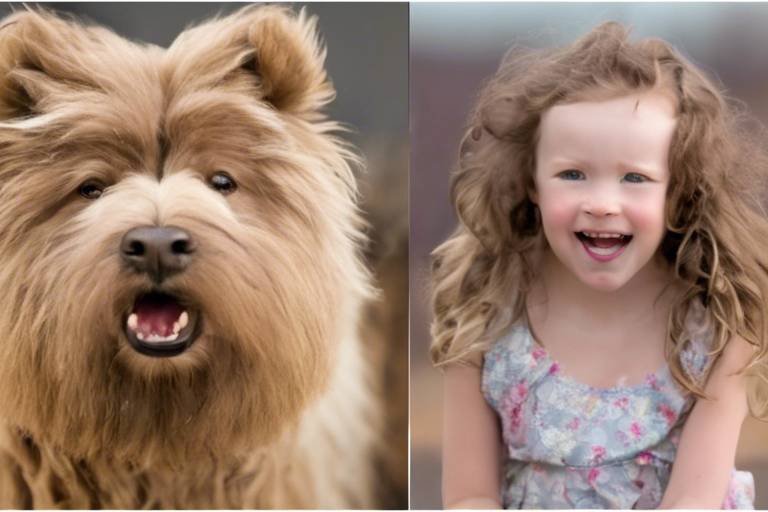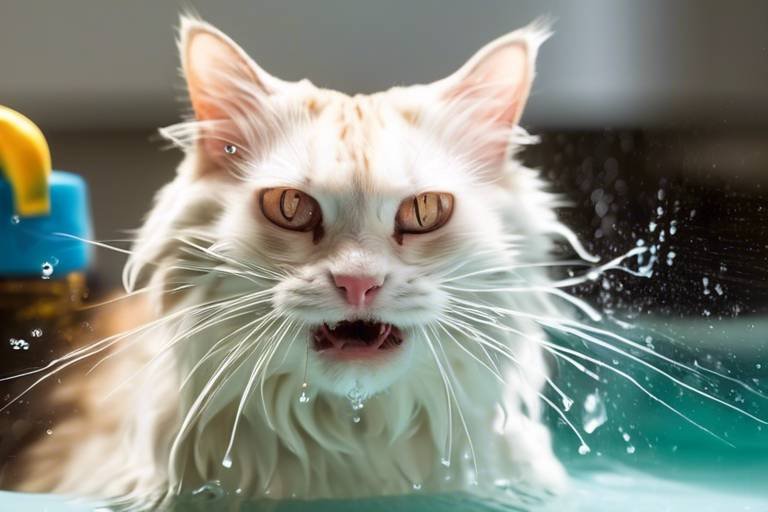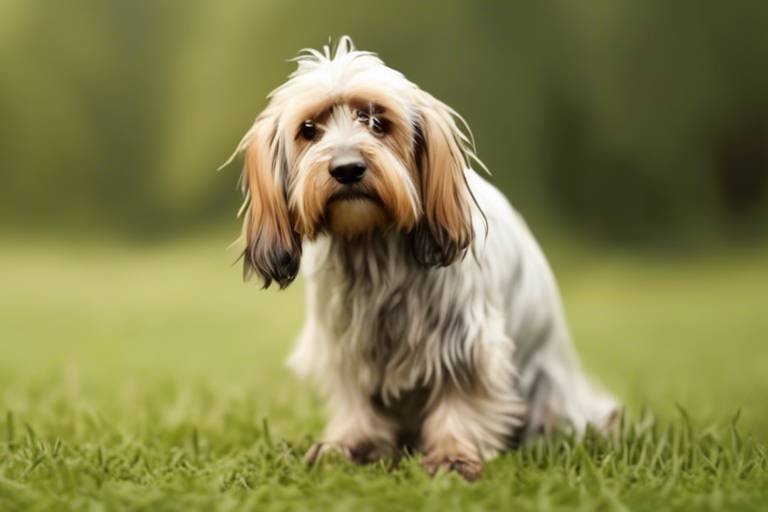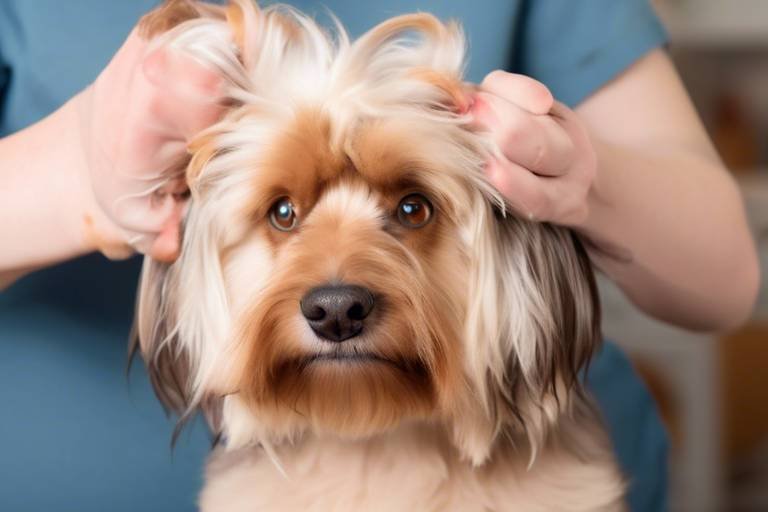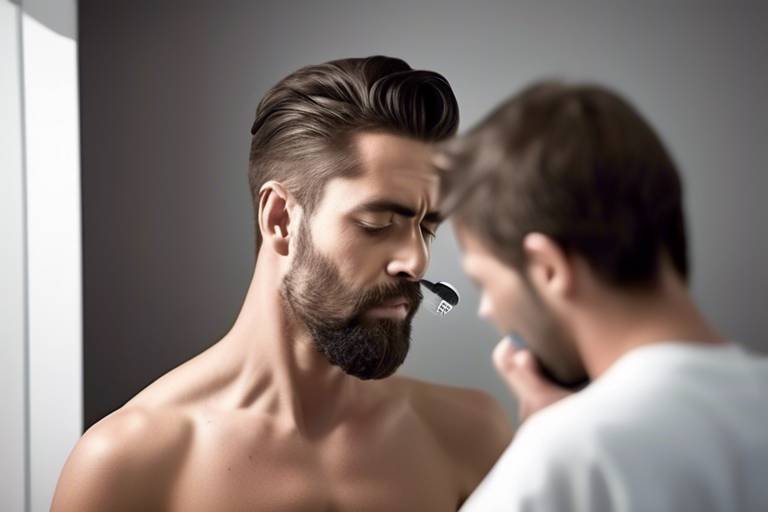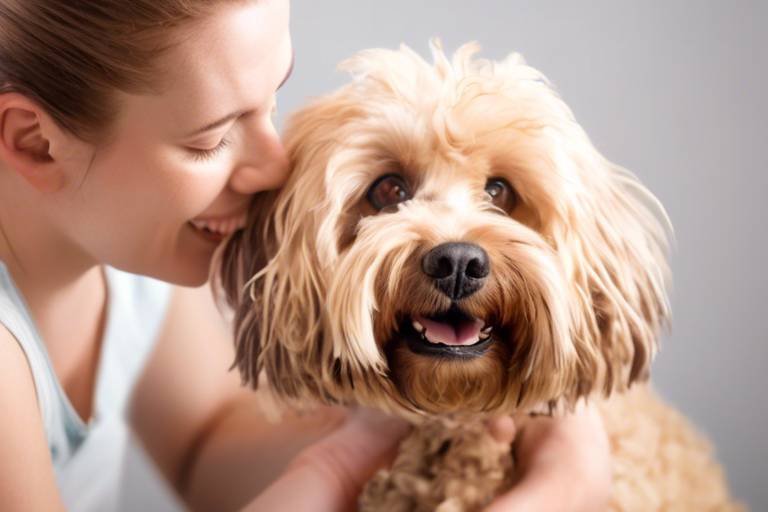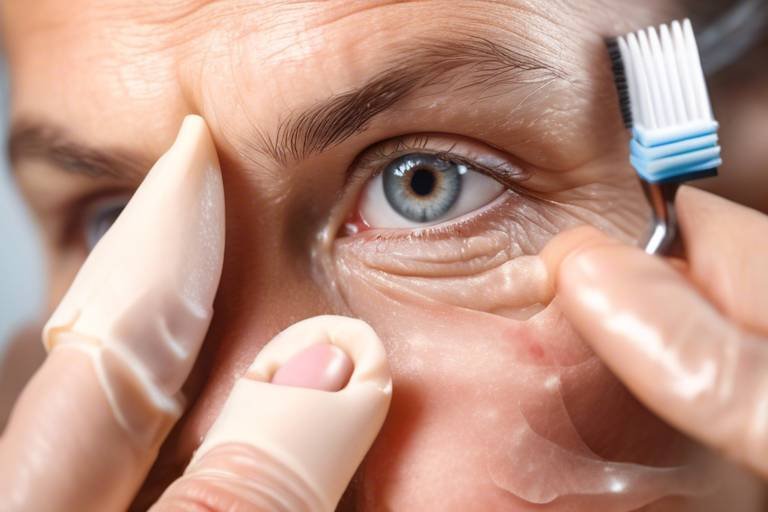How to Train Your Pet to Tolerate Grooming Equipment
Training your pet to accept grooming equipment can feel like a daunting task, but with the right approach, it can be a rewarding experience for both you and your furry friend. Imagine transforming what was once a battle into a bonding session filled with love and trust. Grooming is not just about keeping your pet looking good; it’s essential for their health and happiness. Regular grooming helps prevent matting, reduces shedding, and allows you to check for any skin issues or parasites. So, let’s dive into some essential tips and techniques that will make grooming a breeze!
Before you even think about picking up that brush or clipper, it’s crucial to understand your pet's behavior. Pets, just like humans, have different personalities and reactions to unfamiliar situations. Have you ever noticed your dog’s ears perk up or their tail tuck between their legs? These are clear signs of anxiety or fear. Recognizing these signals is the first step in ensuring a smooth grooming experience. When your pet shows signs of distress, such as whining, hiding, or excessive panting, it’s a red flag that they need more time to acclimate to the grooming tools.
Now that you’re tuned into your pet's feelings, let’s talk about the tools of the trade. Choosing the right grooming equipment can significantly impact your pet's comfort level. Imagine trying to get your hair done with a pair of rusty scissors—yikes! The same goes for your pet. Opt for tools designed specifically for their needs. For instance, long-haired breeds require different brushes compared to short-haired ones. Here’s a quick breakdown of what to consider when selecting grooming tools:
From brushes to clippers, each grooming tool serves a specific purpose. Understanding these tools will help you make informed choices. Here’s a closer look:
Brushes and combs come in various shapes and sizes, each tailored for specific coat types. For example, slicker brushes work wonders on long-haired breeds, while bristle brushes are perfect for short-haired pets. Choosing the right brush can make a world of difference in your pet's grooming experience. Always remember to brush gently, as aggressive brushing can lead to discomfort and aversion.
Clippers and trimmers can be intimidating for pets, but selecting the right ones can ease their anxiety. Look for quiet, low-vibration options that won’t startle your furry friend. A gentle introduction to these tools can help them associate the sound with a positive experience rather than fear.
Using the right grooming techniques is just as important as having the right tools. Start slow and allow your pet to sniff and explore the grooming equipment before you begin. This can help demystify the tools and make them less threatening. During grooming, keep an eye on your pet’s body language and adjust your approach accordingly. If they seem tense, take a break, and try again later. Remember, grooming should be a positive experience!
Gradual exposure to grooming equipment is key in reducing fear. Start by simply placing the tools near your pet without using them. Let them sniff and investigate. Over time, you can introduce the sounds and sensations associated with grooming. A step-by-step approach works wonders. For example, you might begin with just the brush, then progress to brushing for a few seconds, gradually increasing the duration as your pet becomes more comfortable.
Using treats and praise during grooming can create a positive association. When your pet behaves well, reward them with a treat or some affectionate words. This not only encourages good behavior but also reinforces the idea that grooming is a fun and enjoyable experience. Think of it as a little party for your pet every time they tolerate the brush or clippers!
Keeping training sessions brief and enjoyable is essential for maintaining your pet's interest. A good rule of thumb is to aim for around 5-10 minutes of grooming at a time, especially when you’re just starting out. End each session on a positive note, even if it means just a quick brush or a few seconds with the clippers. This way, your pet will look forward to the next grooming session!
Establishing a consistent grooming routine helps pets become accustomed to the process. Regular grooming not only improves your pet's tolerance but also contributes to their overall well-being. Try to stick to a schedule, whether it’s weekly or bi-weekly, so your pet knows what to expect. Over time, they’ll learn that grooming is just another part of their day, much like a walk or mealtime.
Q: How can I tell if my pet is anxious about grooming?
A: Look for signs such as hiding, excessive barking, whining, or trying to escape. These behaviors indicate that your pet may be uncomfortable or scared.
Q: What if my pet doesn’t respond to treats during grooming?
A: Every pet is different. If treats don’t seem to work, try using their favorite toy or a gentle petting session as a reward instead.
Q: How often should I groom my pet?
A: This depends on the breed and coat type. Long-haired breeds may require more frequent grooming, while short-haired pets might only need it every few weeks.
By understanding your pet’s behavior, choosing the right tools, and employing effective techniques, you can transform grooming from a stressful chore into a delightful bonding experience!
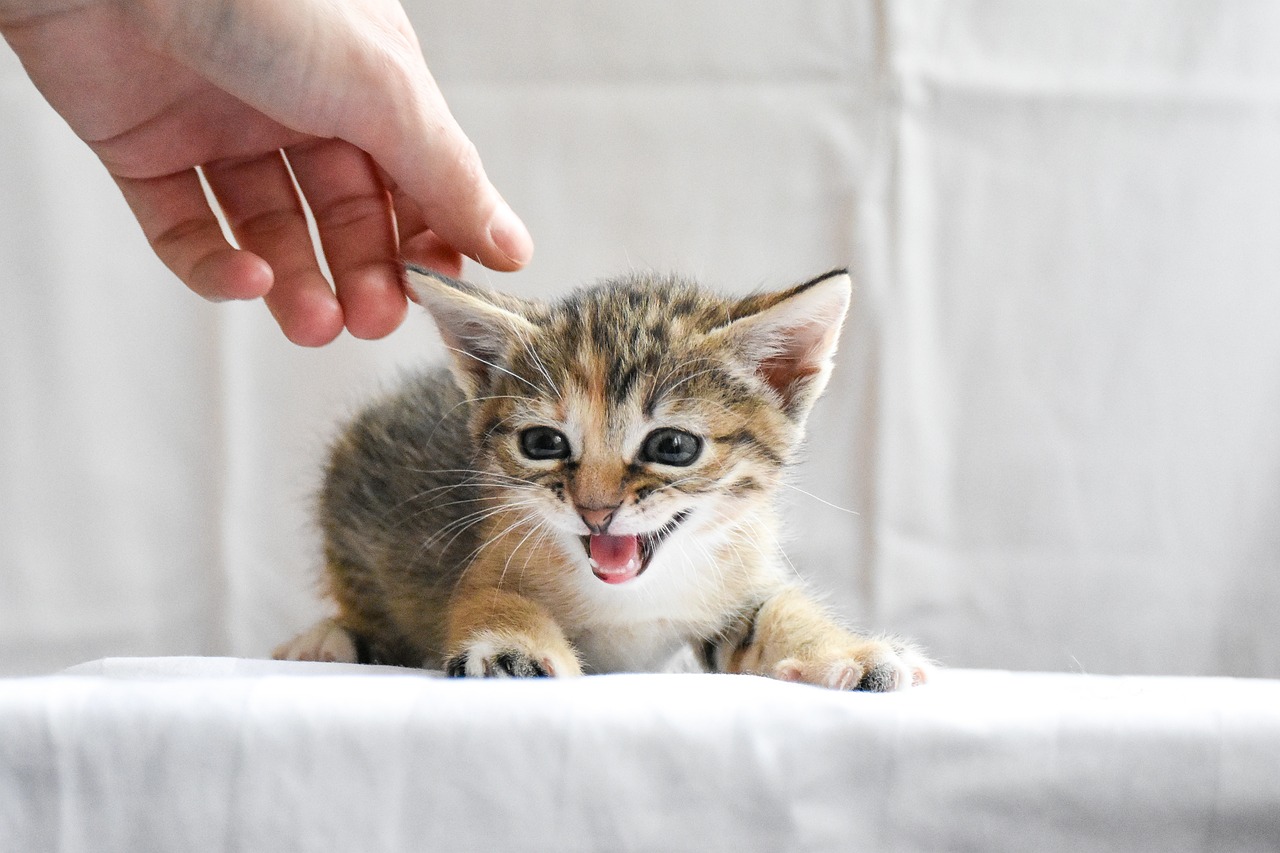
Understanding Your Pet's Behavior
When it comes to grooming your beloved furry friend, understanding their behavior is absolutely crucial. Pets, much like humans, have their own unique ways of expressing feelings, especially when it comes to new experiences. Grooming can be a source of anxiety for many pets, so recognizing the signs of fear or discomfort can help you tailor your approach accordingly. For instance, if your dog is cowering or trying to hide, it's a clear indication that they may not be ready for grooming just yet.
One of the first steps in understanding your pet's behavior is to pay close attention to their body language. Here are some common signs to look out for:
- Tail Position: A tucked tail often signifies fear, while a wagging tail can indicate excitement or curiosity.
- Ears: Ears pinned back against the head can indicate stress, while perked ears show interest.
- Vocalizations: Whining, growling, or barking can be signs of anxiety or discomfort.
- Pawing or Scratching: If your pet is trying to escape or pawing at the equipment, they may be feeling overwhelmed.
By observing these behaviors, you can gain valuable insights into how your pet feels about grooming equipment. It's essential to remember that each pet is different; while one may be fearful of clippers, another might be anxious about brushes. Taking the time to understand these nuances can make a world of difference in your grooming sessions.
Another important aspect to consider is the context of your pet's behavior. For example, if your pet has had a negative experience with grooming in the past, they might associate that fear with the grooming tools you use today. This is where patience and gentle exposure come into play. Gradually introducing your pet to the grooming tools without any pressure can help alleviate their fears over time.
Moreover, it's beneficial to create a positive environment during grooming sessions. This means ensuring that the setting is calm and free from distractions. Play soothing music, use treats, and offer plenty of praise to help your pet associate grooming with positive experiences. Remember, the goal is to make grooming a stress-free and enjoyable experience for both you and your pet.
In summary, understanding your pet's behavior is the first step toward a successful grooming routine. By recognizing their signs of fear and discomfort, observing their body language, and creating a positive environment, you can help your furry friend become more comfortable with grooming equipment. This not only enhances their grooming experience but also strengthens the bond between you and your pet.
Q: How can I tell if my pet is anxious during grooming?
A: Look for signs like cowering, trying to escape, pinned ears, or vocalizations such as whining or growling.
Q: What should I do if my pet refuses to be groomed?
A: Take a step back and try desensitization training. Introduce grooming tools gradually and reward your pet for calm behavior.
Q: How often should I groom my pet?
A: This depends on the breed and coat type. Generally, regular grooming every few weeks is beneficial for most pets.
Q: Can I use human grooming tools on my pet?
A: It's best to use tools specifically designed for pets, as they cater to their unique coat types and sensitivities.
Q: What if my pet has had a bad experience with grooming?
A: Be patient and start with desensitization techniques. Gradual exposure and positive reinforcement can help rebuild their trust.
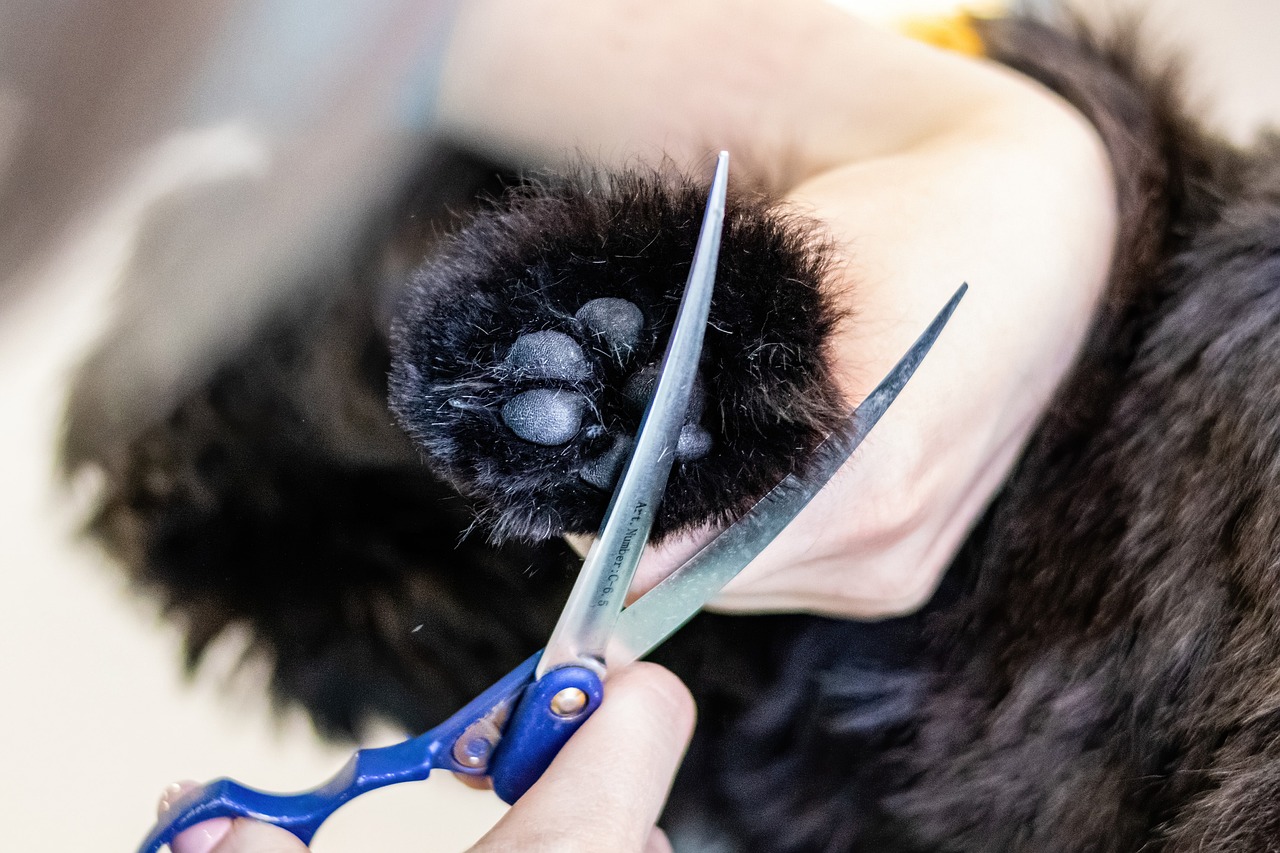
Choosing the Right Equipment
When it comes to grooming your pet, the right equipment can make all the difference in the world. It's not just about aesthetics; choosing the appropriate tools can significantly impact your furry friend's comfort and overall grooming experience. Imagine trying to get a haircut with a rusty old pair of scissors versus a sharp, professional-grade one—it's a no-brainer! Similarly, your pet deserves grooming tools that are both effective and gentle.
One of the first things to consider is the type of coat your pet has. Different breeds come with unique grooming needs, and understanding these can help you select the right tools. For example, long-haired breeds like Persian cats or Golden Retrievers require different brushes compared to short-haired breeds like Beagles or Boxers. Using the wrong brush can lead to discomfort and even pain for your pet, making them associate grooming with negative experiences. Here’s a quick breakdown of the types of brushes you might consider:
| Coat Type | Recommended Tools |
|---|---|
| Long-haired | Wide-toothed combs, slicker brushes |
| Short-haired | Rubber curry brushes, bristle brushes |
| Curly or wiry | Pin brushes, de-shedding tools |
Another crucial factor is the quality of the grooming tools. Investing in high-quality equipment may require a bit more upfront cost, but it pays off in the long run. Low-quality tools can break easily, cause discomfort, or even injure your pet. Look for ergonomic designs that offer a comfortable grip, especially if you plan to groom your pet frequently. It's also essential to consider the noise level of electronic grooming devices. Pets can be sensitive to loud sounds, so opting for quiet clippers or low-vibration trimmers can ease your pet's anxiety during grooming sessions.
Lastly, don't overlook the importance of accessories. Items like grooming gloves or a good grooming apron can make the process smoother and more enjoyable for both you and your pet. Grooming gloves, for instance, allow you to bond with your pet while removing loose fur, making it a win-win situation. When you have the right tools and accessories, grooming can transform from a dreaded chore into a fun and rewarding experience.
In conclusion, choosing the right grooming equipment is crucial for a stress-free grooming experience. By understanding your pet's specific needs and investing in quality tools, you can ensure that grooming becomes a positive part of your pet's routine. So, take the time to research and select the best equipment for your furry friend—you'll both be glad you did!
Types of Grooming Tools
When it comes to grooming your beloved pet, understanding the different types of grooming tools available can make all the difference. Each tool serves a unique purpose, and choosing the right one can transform grooming from a dreaded chore into a delightful bonding experience. Just like how a chef selects the right knife for each ingredient, you too should be equipped with the right tools to ensure a smooth grooming process.
Let's dive into the most common grooming tools and their specific uses. This knowledge will empower you to make informed choices, ensuring your furry friend feels comfortable and looks fabulous!
| Grooming Tool | Purpose | Best For |
|---|---|---|
| Brushes | Untangles fur and removes loose hair | Long-haired and medium-haired pets |
| Combs | Detangles and smooths fur | Short-haired pets and finishing touches |
| Clippers | Shortens and shapes fur | All breeds, especially those needing regular trims |
| Trimmers | For delicate areas like paws and face | All breeds, particularly those with intricate grooming needs |
Brushes and combs are your first line of defense against tangles and mats. A good brush can make your pet's coat shine like a diamond, while a comb can help you reach those tricky spots. For long-haired breeds like the Persian cat or the Golden Retriever, a slicker brush is ideal. It not only detangles but also removes dead hair, which can be a game-changer during shedding season.
When it comes to clippers and trimmers, selecting the right tool can be a bit overwhelming due to the variety available. Look for clippers that are quiet and low-vibration, as these features can significantly reduce your pet's anxiety. For instance, if you're grooming a nervous Shih Tzu, a clipper with a whisper-quiet motor will help keep them calm. Remember, it’s not just about cutting hair; it’s about creating a positive experience for your furry friend.
In addition to these tools, there are also specialty items like grooming gloves, which can be great for a quick petting session that doubles as grooming. They’re perfect for pets who might be skittish about brushes or clippers. Imagine the joy of giving your pet a gentle massage while also removing loose fur—it's like a spa day for your furry companion!
In summary, understanding the types of grooming tools available will not only enhance your pet's grooming experience but also strengthen the bond between you and your pet. By selecting the right tools and using them effectively, you can turn grooming into a rewarding routine rather than a dreaded task. So gear up, and let’s make grooming a fun and enjoyable experience for both you and your pet!
Brushes and Combs
When it comes to grooming your furry friend, choosing the right brushes and combs is absolutely essential. Not only do these tools help keep your pet's coat looking fabulous, but they also play a significant role in maintaining their overall health. Imagine brushing your hair with a tool that feels good and doesn’t tug at your scalp—your pet deserves that same level of comfort! So, let’s dive into the different types of brushes and combs available and how to select the best one for your pet’s specific needs.
First off, it’s important to understand that not all brushes and combs are created equal. Each tool is designed for a particular coat type and grooming purpose. For instance, if your pet has a long, flowing coat, a slicker brush might be your best bet. This type of brush has fine, short wires close together, making it perfect for removing tangles and mats. On the other hand, if you have a short-haired breed, a bristle brush might be more appropriate. Its soft bristles will help distribute natural oils throughout the coat, giving it that healthy shine.
Here’s a quick breakdown of some common types of brushes and combs:
| Type of Tool | Best For | Benefits |
|---|---|---|
| Slicker Brush | Long-haired breeds | Removes tangles and mats effectively |
| Bristle Brush | Short-haired breeds | Distributes natural oils, adds shine |
| Undercoat Rake | Double-coated breeds | Removes loose undercoat hair |
| Pin Brush | Medium to long-haired breeds | Detangles and smooths coat |
Now, before you rush off to buy the fanciest brush, consider your pet's specific coat type and needs. For example, if your dog is prone to matting, investing in a quality slicker brush will save you a lot of time and frustration. Conversely, a cat with a short coat might be perfectly content with a simple bristle brush. Always remember, the goal is to make grooming a pleasant experience for both you and your pet.
Another crucial factor is the size of the brush or comb. A tool that’s too big may be awkward to handle, while one that’s too small might not cover enough area efficiently. Always opt for a size that feels comfortable in your hand and is easy to maneuver around your pet’s body. And don’t forget about the handle—look for ergonomic designs that provide a good grip, especially if your pet tends to squirm during grooming sessions.
Lastly, keep in mind that grooming is not just about aesthetics. Regular brushing helps to remove dirt, debris, and dead hair, which can prevent skin issues and promote a healthy coat. Plus, it’s a great way to bond with your pet. So, grab that brush, take your time, and make it a fun activity! Your furry friend will thank you for it.
Clippers and Trimmers
When it comes to grooming your pet, can be some of the most intimidating tools in your arsenal. Many pets are naturally wary of these buzzing devices, and it's easy to see why! The sound and vibration can be unsettling, making it crucial for pet owners to choose the right equipment to ensure a positive grooming experience. So, how do you navigate this challenging territory? Let’s dive in!
First and foremost, selecting quiet, low-vibration clippers can make a world of difference. These types of clippers are designed specifically to minimize noise and discomfort, which can significantly reduce your pet's anxiety. Imagine trying to relax in a spa while a jackhammer is going off nearby—your pet feels similarly overwhelmed when faced with loud grooming tools. By opting for quieter options, you create a more serene environment that promotes calmness.
Additionally, consider the size and weight of the clippers. Heavy tools can be cumbersome and may inadvertently cause you to apply more pressure than necessary, which could make your pet uncomfortable. Look for lightweight models that fit comfortably in your hand. This makes it easier to maneuver around your pet's body without causing stress or discomfort.
Another important factor is the blade quality. High-quality blades not only cut more efficiently but also tend to be less irritating to your pet's skin. Dull blades can tug at the hair, leading to an unpleasant experience for your furry friend. Regular maintenance, such as cleaning and oiling the blades, will ensure they stay sharp and effective. Think of it like keeping your kitchen knives in top shape; a sharp knife makes cooking a breeze, while a dull one can turn a simple task into a frustrating ordeal.
It’s also wise to familiarize your pet with the clippers before you even turn them on. Let them sniff the clippers and feel their weight in a non-threatening environment. This gradual introduction can help demystify the tool and reduce fear. You might even consider turning on the clippers for a few seconds while offering treats or praise to create a positive association. After all, who doesn’t love a little snack during a potentially stressful situation?
Lastly, remember that grooming should be a positive experience for both you and your pet. If your pet continues to show signs of distress despite your best efforts, it may be worth consulting with a professional groomer or a veterinarian for additional tips or techniques. After all, every pet is unique, and what works for one may not work for another. The key is to stay patient and keep the atmosphere light and fun!
Grooming Techniques
When it comes to grooming your pet, the techniques you use can make all the difference in how comfortable and relaxed your furry friend feels. Think of grooming as a dance between you and your pet, where both partners must be in sync to create a harmonious experience. Start by ensuring that your pet is calm and in a familiar environment. This could be a cozy spot in your home where they feel safe. The goal here is to turn what might seem like a chore into a fun and enjoyable activity.
One effective technique is to introduce grooming gradually. Begin with short sessions that last just a few minutes. During these initial sessions, focus on gentle brushing or petting, which can help your pet associate grooming with positive experiences. As your pet becomes more comfortable, you can slowly increase the duration and complexity of the grooming routine. Just like building a muscle, consistency is key!
Another important aspect of grooming techniques is the order in which you groom. Start with areas that your pet is most comfortable with, such as their back or sides. Gradually move on to more sensitive areas like the paws or ears. This approach not only helps your pet get used to the process but also builds their trust in you. If they start to show signs of anxiety, such as trying to escape or whining, take a step back and give them a break. Remember, it’s all about creating a positive experience.
In addition to the order of grooming, consider the pressure and speed you apply while grooming. Use gentle strokes and avoid pulling on their fur. For pets with long or thick coats, working in small sections can help prevent tangles and discomfort. If you're using clippers or trimmers, ensure they are quiet and low-vibration. This can significantly reduce your pet's anxiety and help them feel more at ease during the grooming process.
To further enhance your grooming sessions, incorporate positive reinforcement. This means rewarding your pet with treats, praise, or playtime whenever they remain calm and cooperative during grooming. For example, after a successful brushing session, give them a tasty treat or their favorite toy. This not only encourages good behavior but also reinforces the idea that grooming can be a fun and rewarding experience.
Lastly, don’t forget to maintain a relaxed atmosphere. Play soft music or talk to your pet in a soothing voice to help them stay calm. You might even consider using aromatherapy with pet-safe essential oils to create a more relaxing environment. By combining these grooming techniques with patience and love, you can transform grooming from a dreaded task into a bonding experience that both you and your pet will look forward to.
- How often should I groom my pet? It depends on the breed and coat type. Long-haired breeds may require grooming several times a week, while short-haired breeds might only need it once a month.
- What if my pet hates being groomed? Start slowly, use positive reinforcement, and create a calm environment. Gradual exposure is key to helping them adjust.
- Can I use human grooming tools on my pet? It's best to use tools specifically designed for pets, as they are made to be safe and effective for their unique coats.
- What should I do if my pet shows signs of aggression during grooming? Stop immediately and give them space. Consider consulting a professional trainer for guidance.
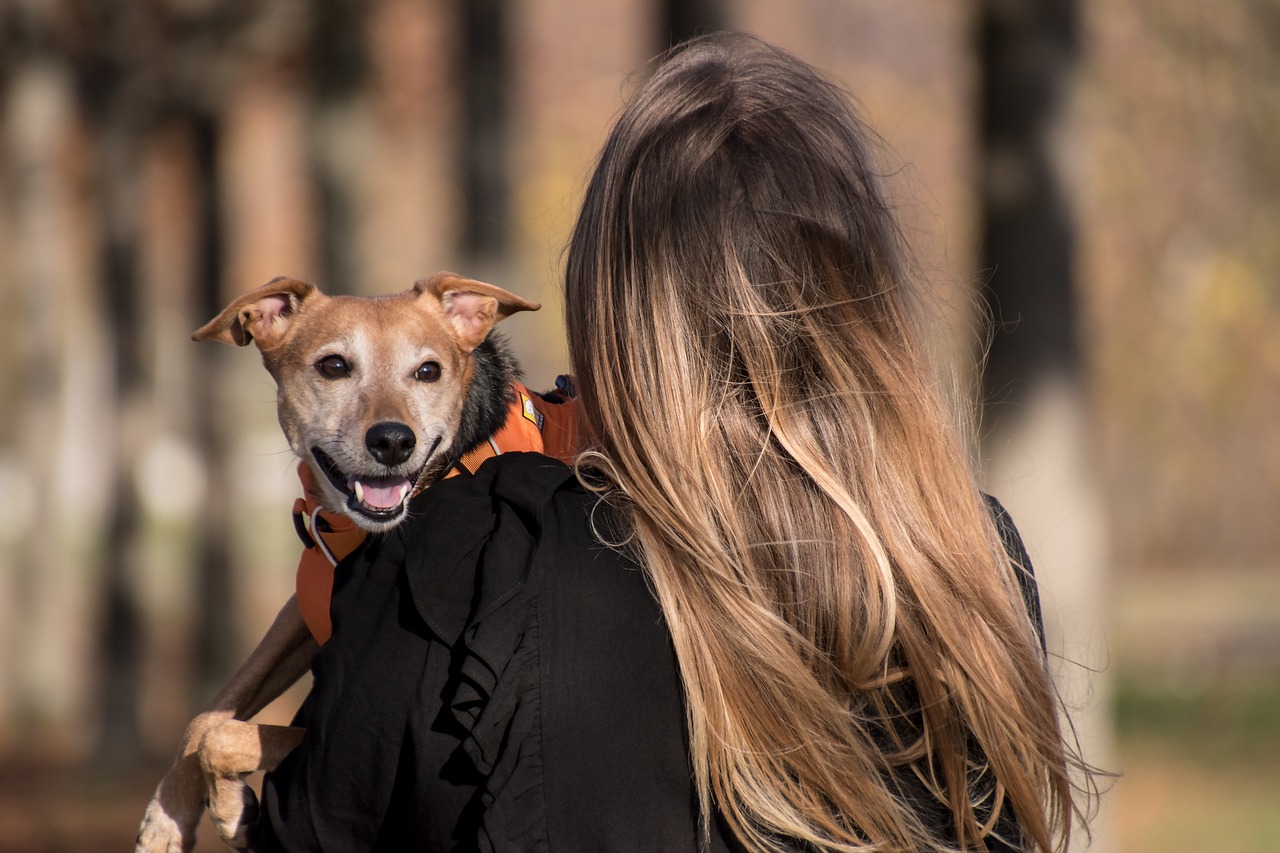
Desensitization Training
Desensitization training is a vital process that can significantly reduce your pet's fear of grooming equipment. The idea here is to gradually introduce your furry friend to the tools they may find intimidating, allowing them to become more comfortable over time. Think of it like introducing a child to a new toy; you wouldn’t throw them into the deep end right away, would you? Instead, you’d start with something small and familiar, building up from there. Similarly, with pets, the goal is to create a positive and relaxed environment during each step of the training process.
To begin this journey, start by selecting a quiet space where your pet feels safe and secure. This helps set the stage for a calm learning experience. Try to keep the atmosphere light and fun—after all, we want our pets to associate grooming with positive feelings. Start with just showing the grooming equipment to your pet without any pressure. Let them sniff it, explore it, and get used to its presence. This step is crucial as it allows them to familiarize themselves with the tool without the stress of immediate use.
Next, you can gradually introduce the sound of the equipment. For example, if you’re using clippers, turn them on in a different room where your pet can hear them but not see them. This way, they can get accustomed to the noise without feeling threatened. Once they seem comfortable with the sound, you can bring the clippers closer, continuing to reward them with treats and praise. This positive reinforcement is key to making them feel safe and secure.
As your pet becomes more accustomed to the equipment, you can start the actual grooming process. Begin with short sessions, focusing on one tool at a time. For instance, if you’re using a brush, start with just a few strokes and gradually increase the duration as your pet becomes more comfortable. It’s essential to monitor their body language throughout the training. Signs of stress, such as panting, whining, or trying to escape, indicate that you might be moving too quickly. Always be ready to take a step back and give them a break if needed.
Here's a simple table to outline the steps for effective desensitization training:
| Step | Description |
|---|---|
| 1 | Introduce the grooming tool without using it. |
| 2 | Familiarize your pet with the sound of the equipment. |
| 3 | Start with short grooming sessions using one tool at a time. |
| 4 | Monitor your pet's behavior and adjust as needed. |
Remember, patience is key. Desensitization is not a race; it's more of a marathon. Your pet may take time to adjust, and that’s perfectly okay. Celebrate the small victories along the way, whether it’s allowing you to brush them for a minute longer or sitting still while you clip their nails. Each step forward is a step towards a more enjoyable grooming experience for both of you!
In the end, desensitization training is about building trust. Your pet needs to know that you have their best interests at heart. With time, patience, and love, you’ll turn grooming from a dreaded chore into a bonding experience that you both look forward to. So take a deep breath, stay consistent, and watch your pet thrive!
Q: How long does desensitization training take?
A: The duration can vary widely depending on your pet's temperament and previous experiences. Some pets may adapt within a few sessions, while others may take weeks or even months. The key is to go at your pet's pace.
Q: What if my pet shows signs of aggression during training?
A: If your pet displays aggressive behavior, it’s crucial to stop the session immediately and seek the advice of a professional trainer or behaviorist. Safety is always the priority.
Q: Can I use desensitization techniques for other training purposes?
A: Absolutely! Desensitization techniques can be applied to various situations, such as introducing new pets, loud noises, or unfamiliar environments. The principles remain the same—gradual exposure and positive reinforcement.
Positive Reinforcement
When it comes to training your pet to tolerate grooming equipment, is your best friend. This method not only encourages good behavior but also helps create a stress-free environment for both you and your furry companion. Imagine a world where your pet associates grooming with treats, praise, and love—sounds dreamy, right? Well, it’s entirely achievable!
To start, you’ll want to gather some of your pet's favorite treats. These can be anything from small pieces of kibble to special training treats. The key is to choose something that your pet absolutely loves. You can also use verbal praise or affection as rewards. The goal here is to make your pet feel like a superstar every time they tolerate a grooming tool.
Begin by introducing the grooming equipment slowly. For example, if you’re using a brush, let your pet sniff it first. Once they show curiosity without signs of fear, reward them with a treat. This step is crucial because it helps your pet associate the brush with something positive. You can say things like, “Good boy!” or “What a brave girl!” in an enthusiastic tone to reinforce their bravery. Over time, your pet will begin to understand that the brush is not a monster lurking in the shadows, but rather a tool that brings good things.
As you progress, gradually increase the exposure time. Start with just a few strokes and reward your pet immediately afterward. If they remain calm, extend the grooming time slightly during the next session. Remember, patience is key. Every pet learns at their own pace, and it's essential to celebrate even the smallest victories.
Here's a simple breakdown of how you might structure a positive reinforcement session:
| Step | Action | Reward |
|---|---|---|
| 1 | Introduce the grooming tool | Give a treat for calm behavior |
| 2 | Allow sniffing and exploration | Praise and treat |
| 3 | Brush for a few seconds | Immediate treat and praise |
| 4 | Gradually increase grooming time | Continue rewarding |
By consistently using positive reinforcement, you’ll not only help your pet become more comfortable with grooming equipment but also strengthen the bond between you two. It’s like building a bridge of trust where your pet feels safe and loved. So, the next time you reach for that brush or clipper, remember to bring along those treats and a pocket full of praise. Your pet will thank you for it!
Short Training Sessions
When it comes to training your pet to tolerate grooming equipment, keeping the sessions short is key. Think of it this way: just like we can get bored or overwhelmed during long meetings, our furry friends can also lose interest or become anxious if training drags on too long. Ideally, these sessions should last no more than 5 to 10 minutes. This timeframe is short enough to keep your pet engaged but long enough to make some real progress.
During these brief sessions, focus on one specific grooming tool at a time. For instance, if you're introducing a brush, spend the entire session allowing your pet to sniff and explore it. You can gently brush a small area of their body, rewarding them with treats and praise. This positive reinforcement will help them associate the brush with good feelings. If you notice any signs of discomfort, stop immediately. It’s crucial to listen to your pet's body language. If they seem stressed, it’s a clear signal that it’s time to wrap things up.
Another helpful tip is to vary the activities within these short sessions. For example, you can alternate between brushing, showing them the clippers, and even just playing with them. This keeps things fun and prevents your pet from associating grooming with a monotonous chore. You can also incorporate their favorite toys or treats to make the experience even more enjoyable. Remember, the goal is to create a positive atmosphere around grooming.
In addition to keeping training sessions brief, consider the following strategies to maximize effectiveness:
- Consistency is vital: Try to schedule these short sessions at the same time every day. This helps your pet know what to expect and builds a routine.
- Stay calm and positive: Your energy will affect your pet. If you’re relaxed and upbeat, they’re more likely to feel the same way.
- Use a calm voice: Speak to your pet in a soothing tone while you train. This helps create a comforting environment.
Ultimately, the key to successful grooming training lies in patience and persistence. By keeping your training sessions short and sweet, you’ll gradually build your pet’s confidence and tolerance towards grooming equipment. Over time, what once seemed intimidating will become just another part of their routine, and both you and your pet will look forward to these bonding moments.
Q: How often should I conduct these short training sessions?
A: Aim for daily sessions, but if that’s not feasible, try to do them several times a week. Consistency is what builds comfort.
Q: What if my pet shows signs of aggression during training?
A: If your pet reacts aggressively, it’s crucial to stop the session immediately. Consider consulting a professional trainer to address these behaviors safely.
Q: Can I combine grooming with playtime?
A: Absolutely! Mixing grooming with play can make the experience more enjoyable for your pet and help them associate grooming with fun.
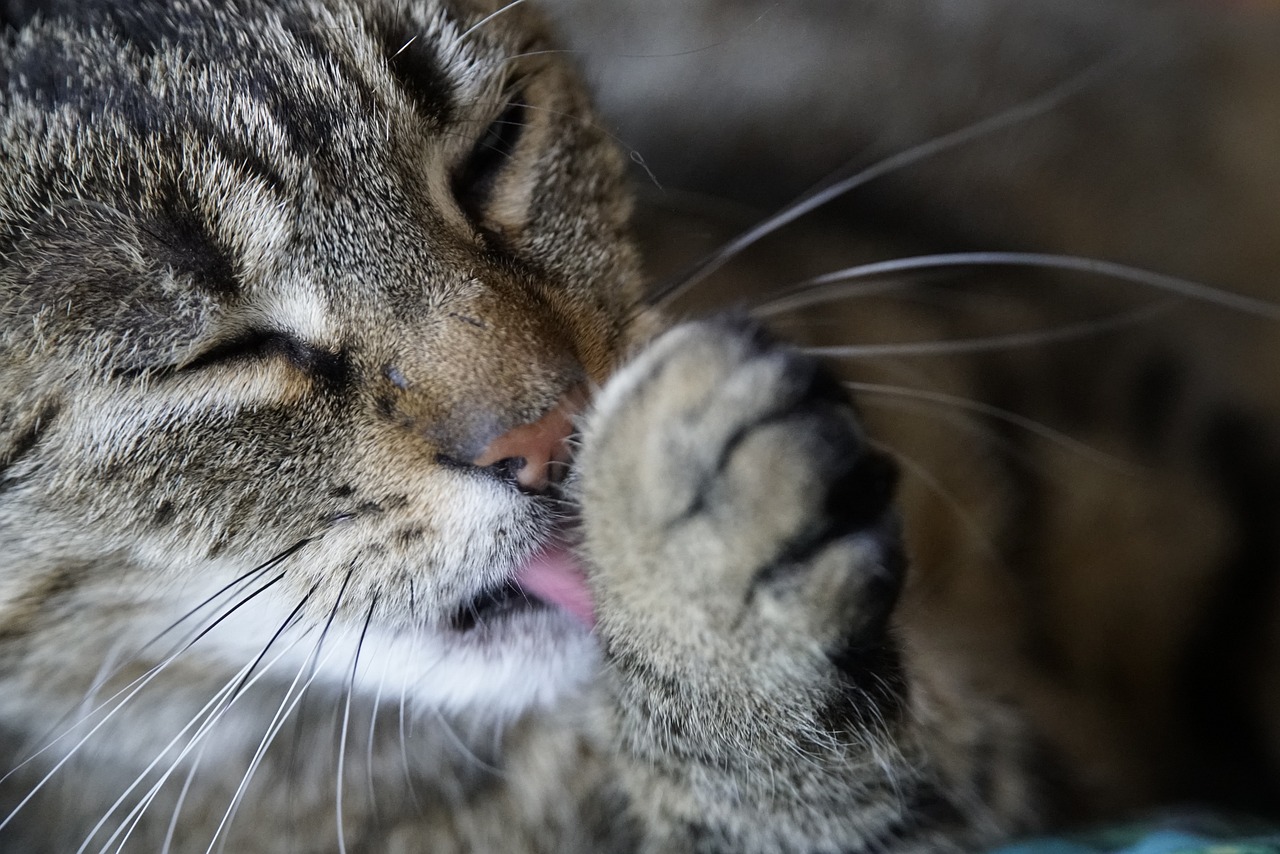
Maintaining a Routine
Establishing a consistent grooming routine is crucial for helping your pet become accustomed to the process. Just like how we thrive on predictability in our daily lives, pets also benefit from knowing what to expect. A regular schedule not only helps reduce anxiety but also enhances your pet's overall well-being. Think about it: wouldn’t you feel more comfortable if you knew that every Saturday morning was dedicated to a nice bath and brushing session? It's all about creating that sense of comfort and security.
When you set a grooming schedule, it’s essential to keep it realistic and manageable. Consider your pet's temperament and energy levels; some pets may enjoy grooming sessions, while others might find them overwhelming. Start by identifying a time that works best for both you and your furry friend. For instance, if your pet tends to be more relaxed after a walk, that might be the perfect moment to introduce grooming.
Incorporating grooming into your pet's routine can also be a bonding experience. Think of it as a special time you carve out for each other. You can use this opportunity to not only groom but also to check for any skin issues or discomforts. Regular grooming sessions allow you to keep an eye on your pet's health while simultaneously reinforcing your relationship.
To make the grooming routine more effective, consider the following tips:
- Set a Schedule: Choose specific days and times for grooming, so your pet knows when to expect it.
- Stay Consistent: Try to stick to your schedule as much as possible, as consistency helps reinforce the behavior.
- Make it Fun: Incorporate playtime or treats into the grooming sessions to keep things light and enjoyable.
Additionally, always pay attention to your pet's reactions during grooming. If they seem stressed or anxious, it might be time to adjust your routine. Perhaps shorter sessions or more frequent breaks could help. Remember, the goal is to create a positive experience that your pet looks forward to rather than dreads.
Finally, don’t forget to celebrate the small victories! Whether it’s a successful grooming session or your pet simply allowing you to touch their paws, acknowledging these moments will reinforce their positive behavior. You can even keep a little journal to track progress and celebrate milestones in your pet's grooming journey. This not only helps you stay organized but also allows you to reflect on how far you both have come.
Q: How often should I groom my pet?
A: The frequency of grooming depends on your pet's breed and coat type. Long-haired breeds may require grooming several times a week, while short-haired pets may only need it once a month.
Q: What should I do if my pet resists grooming?
A: Start with short sessions and gradually increase the duration as your pet becomes more comfortable. Use positive reinforcement techniques, such as treats and praise, to encourage good behavior.
Q: Can I groom my pet at home?
A: Yes! With the right tools and techniques, you can groom your pet at home. However, if your pet has specific grooming needs, consider consulting a professional groomer.
Q: What grooming tools do I need?
A: The tools you'll need depend on your pet's coat type. Basic tools include brushes, combs, nail clippers, and shampoo. Always choose equipment that is suitable for your pet's specific needs.
Frequently Asked Questions
- How can I tell if my pet is anxious about grooming?
Pets often show signs of anxiety through their body language. Look for behaviors like cowering, hiding, or excessive panting. If your pet tries to escape or growls when you bring out grooming tools, it’s a clear indicator that they’re not comfortable. Understanding these signals is the first step in helping them feel more at ease.
- What grooming equipment should I start with?
When beginning your grooming journey, it’s best to start with basic tools like a gentle brush suited for your pet’s coat type, a comb, and perhaps a pair of nail clippers. Choose equipment that is specifically designed for your pet’s breed and size to ensure comfort. Remember, the right tools can make a world of difference!
- How do I desensitize my pet to grooming tools?
Desensitization is all about gradual exposure. Start by letting your pet sniff the grooming tools while offering treats. Gradually increase exposure by turning the tools on when your pet is calm, rewarding them with praise or treats. This step-by-step approach helps them associate grooming tools with positive experiences.
- How often should I groom my pet?
The frequency of grooming depends on your pet's breed and coat type. For long-haired pets, weekly grooming is often necessary, while short-haired pets may only need it every few weeks. Establishing a routine not only keeps your pet looking great but also helps them get used to the grooming process over time.
- What if my pet still hates grooming after training?
If your pet continues to resist grooming, it might be worth consulting a professional groomer or a veterinarian. They can provide additional techniques or even help with the grooming process. Sometimes, a fresh perspective can make all the difference!
- Can I use treats during grooming?
Absolutely! Using treats during grooming can create a positive association. Just ensure that you’re giving small, healthy treats and that it doesn’t distract your pet too much from the grooming process. The goal is to make grooming enjoyable, not a chore!



